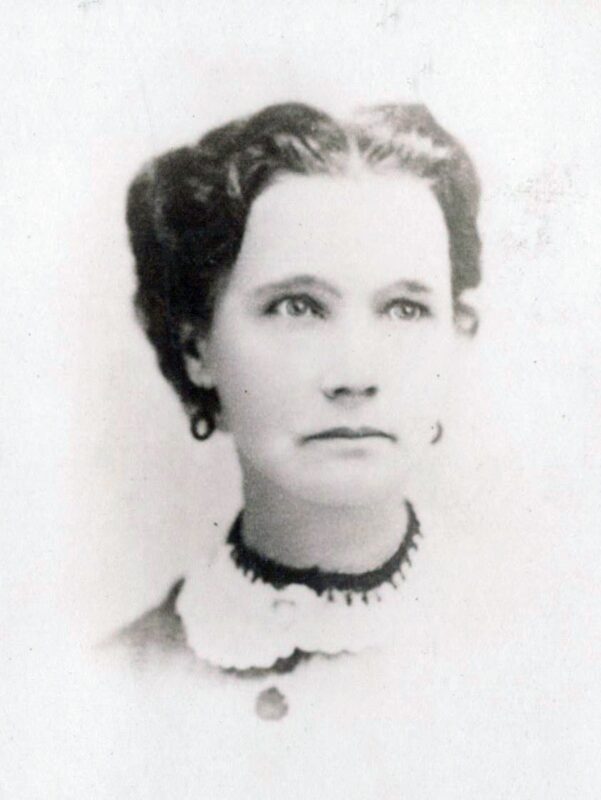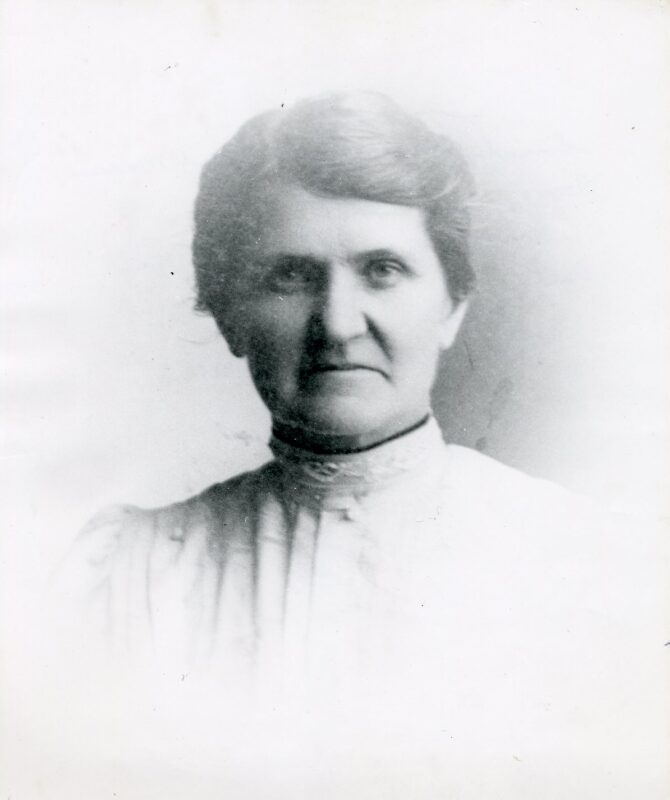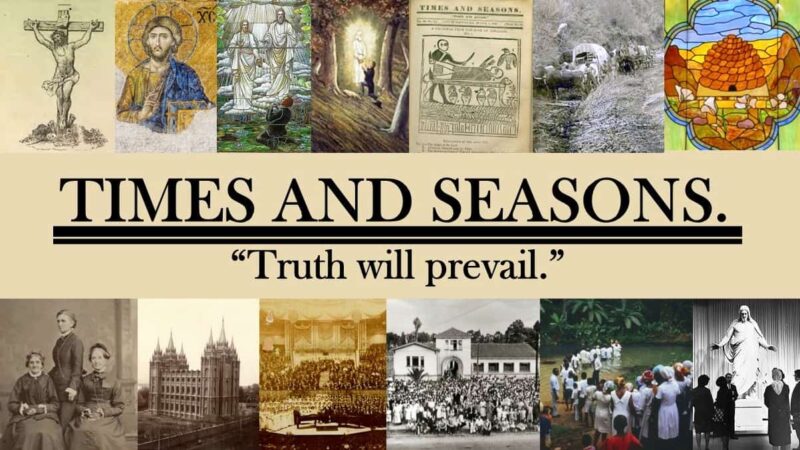
D&C 45 covers a lot of different things, from the role of the Savior to the safety of Zion. In the last few decades our LDS culture has also made a lot of this section’s observation that His disciples will ‘stand in holy places, and … not be moved.’ As an image that description suggests both that there are specific physical locations in which we should stand, and that we should remain in those locations. But I think these images are metaphors, and not physical sites — wasn’t the Good Samaritan ‘standing in holy places?’ It seems to me that he ‘stood in holy places’ by moving.
In this sense, all scripture is about how we ‘stand in holy places.’ The lesson finds several ways to do this. We can rely on Christ, our advocate with the Father. We can provide a standard to the Nations. We can look forward to Christ’s return. And we can create Zion, as a place of safety for others.
Jesus Christ is my Advocate with the Father.
The idea of Christ as an advocate leads to unusual imagery today—you might think of a court, with Christ as your lawyer. But such imagery carries with it a legalistic and adversarial system that seems out-of-step with my understanding of our Heavenly Father. Maybe I’m wrong, or maybe the system is more merciful than that, if nothing else because of Christ’s intercession on our behalf.

The following poem catches an alternative way of seeing advocacy. Here the support we get is through mercy, rather than through justice in a court. The poet is Lucy Minerva Woodward Hewlings (1817-1901), who was one of the unusual non-Mormon immigrants to Utah in the 1870s, following children who joined the Church. She was active in both feminist and temperance efforts during her life and was well integrated in Utah society. Her work appeared frequently in the Woman’s Exponent.
The Christian’s Support
by L. M. Hewlings
- The bow of God’s mercy is spanning death’s river,
- With a halo luminous, bright!
- While enthroned far above, in glory forever,
- He sits, who commanded the light.
- With quiet composure, Faith looks o’er the valley,
- His clear shining footsteps have trod;
- On His word reposing, disarming its terrors,
- Beholds the fair City of God.
- Mighty science, tho’ piercing mysterious darkness,
- Yet fails to lead on to this goal;
- Reaching backward, or down ‘neath ocean’s bed fathoms,
- Ne’er answers this question of soul.
- Great nature alone fails to solve this dread problem,
- Tho’ its secret chambers we probe;
- By its light only, this want is unanswered,
- And were but a dark weary load,
- Did not this assurance of Truth’s revelation,
- No sophistry ever can dim,
- “That He ever liveth”—our risen Redeemer—
- And we shall live also in Him.
- Death is the gateway—an entrance to rest,
- We but cross its narrow divide;
- To awake in His likeness, to reign with the blest,
- Where soul wants are all satisfied.
1891
The gospel is a standard to the nations.
Despite what many today think, standing in holy places isn’t exclusive. By its mere outside look, Zion, or a holy places, naturally attracts others. It doesn’t need advertising, promotion or even a flag; Zion is its own standard! And standing in holy places means eagerly accepting and encouraging others to come stand with you in holy places.
Parley P. Pratt, the most innovative of our early writers, here sees a metaphorical flag, a standard, that invites all to come to Zion, where all can stand in holy places.
The Standard of Zion
by Parley P. Pratt
- O Saints have you seen o’er yon mountain’s proud height,
- The day star of promise so brilliantly beaming?
- Its rays shall illumine the world with its light:
- And the ensign of Zion exultingly streaming
- All nations invites to walk in its light,
- And join to maintain the proud standard of right.
-
- The standard of Zion ! O long may it wave
- O’er the land of the free and the home of the brave.
-
- Our motto is peace, and the triumph of right,
- And we joyfully hail the Millennial dawning,
- When man can emerge from a long dreary night
- And bask in the sunbeams of Zion’s bright morning.
- The white flag so rare, still floating in air,
- Proclaims ’mid the mountains that peace is now there;
-
- Let the standard of Zion eternally wave
- O’er the land of the free and the home of the brave.
-
- Though earth and its treasures should melt in the fire—
- The planets be riven with the trumpet’s loud thunder;
- The sun-light of heaven wax dim and expire,
- And the veil of eternity parted asunder;
- Yet firm and unshaken the truth shall remain,
- And the heirs of the priesthood for ever shall reign;
-
- And the standard of Zion eternally wave
- O’er the land of the free and the home of the brave.
-
1856
Jesus Christ will return in glory.
Zion, as a holy place, is connected to the idea of the return of Jesus Christ, and the early millennial poetry of the Latter-day Saints (as well as the D&C) reflects that orientation. Here, hymn writer W. W. Phelps gives his vision of the second coming and how Christ will bring Zion with him. I’m not sure whether Phelps is correct, that Christ will bring Zion, or whether, on the other hand, Zion is a kind of pre-requisite for Christ’s coming. Regardless, having some kind of Zion is desirable.
The Savior is Coming
by William W. Phelps
- AWAKE, O ye people! the Savior is coming:
- He’ll suddenly come to his temple, we hear;
- Repentance is needed of all that are living,
- To gain them a lot of inheritance near.
- To day will soon pass, and that unknown tomorrow,
- May leave many souls in a more dreadful sorrow,
- Than came by the flood, or that fell on Gomorrah-
- Yea, weeping, and wailing, and gnashing of teeth.
- Be ready, O islands, the Savior is coming;
- He’ll bring again Zion the prophets declare;
- Repent of your sins, and have faith in redemption,
- To gain you a lot of inheritance there.
- A voice to the nations in season is given,
- To show the return of the glories of Eden,
- And call the Elect from the four winds of heaven,
- From Jesus is coming to reign on the earth
1834
I can “stand in holy places” and not be moved.

We can see ‘stand in holy places’ in either a positive or negative way. We might think that standing in holy places means we are going towards a better place, or we might think that we are fleeing something worse.
Poet Sarah Maeser (1860-1944) is an example, I think. She was known as one of the many women in Utah involved in the sufferage movement, trying to better live where she was standing, making life there more holy. She married Reinhold Maeser (son of Karl G. Maeser) in 1882, and continued her activities in favor of women for the next nearly 40 years.
The following poem, written in 1918, is a reaction to World War I, instead of the situation of women (although I bet her feminist sentiments can be read in this poem). As a reaction to the war, the poem sees Zion, where we ‘fearless’ stand, as a refuge from the world, instead of a place being made holy. The circumstantial contrast here may be worth thinking about.
In Faith We Fearless Stand
by Sarah C. Maeser
- Hark, the world with strife is ringing!
- Wide its direful echoes flinging;
- And the thirst for pow’r and worldly gain
- Enthrals the souls of men.
- Yet with faith we fearless stand,
- For our God still rules the nations,
- And we know the world’s salvation
- Rests forever in His hand.
- Now the whirlwind’s pond’rous roaring,
- And the sea its banks o’er pouring;
- And the earthquakes thrill and lightning flash,
- The dreadful warning bring.
- Still with faith we fearless stand,
- For our God still rules the nations,
- And we know the world’s salvation
- Rests forever in His hand.
- Then fear not, though thrones may totter,
- In the midst of human slaughter:
- For from out these blood-fed battle fields
- Shall flow’rs of freedom spring.
- While in faith we fearless stand,
- For our God still rules the nations,
- And we know the world’s salvation
- Rests forever in His hand
1918
Zion is a place of safety for the Saints of God.
The idea of Zion as a refuge is where this lesson ends. Where Sarah Maeser saw the need for refuge in 1918, during World War I, the poet J. H. Flanigan sees it in 1848, as he heads to the British Isles. He is not wrong, since in 1848 much of Europe was in revolution, and even in the U.S. things were far from secure. And ‘Zion’, as Deseret was considered, was barely established—the first pioneers had arrived less than a year before. Still, Flanigan saw it as a refuge.
Safety in Zion
by J. H. Flanigan
- On the Ohio River, June 10th, 1848, when starting on a Mission to the British Islands.
- At a time when the nations seem’d stricken with rage,
- And commotions were rife upon history’s page;
- When the people seem’d vex’d and fired with wrath,
- To o’erturn the dynasties of the whole earth.
- At a time when the Saints by oppression were hurl’d
- From under the banners of Freedom unfurl’d;
- From the conflicts of strife to the mountains repaired,
- While wrath and displeasure of God vex’d the world.
- At this time, when distress and rebellion is heard
- From every kingdom and realm in the world––
- To the Mountains of Israel, far in the West,
- The Lord pointed Zion, to find safety and rest.
- Yes, the Saints, like the doves, now in clouds flocking home,
- O’er the ‘fields of the woods,’ where Ephraim’s sons roam,
- To the vales of the mountains, where free blows the air,
- The wisdom and glory of Zion to rear.
- At this time, when exertion, when wisdom and might,
- Are needed––to hasten, to speed the Saints’ right;
- To assist our brothers, who are noble and free,
- To publish the Gospel, we cross o’er the sea.
- To call out the true spirits, the noble in heart,
- And push them to Zion, where the pure in heart––
- Where the wisdom, the glory, the strength will be found,
- And the House of the Lord and Peace will surround.
1849

Comments
3 responses to “CFM 5/5-5/11: Poetry for “The Promises … Shall Be Fulfilled””
When we think of a trial, we usually think of a criminal trial. (Paul did too.) A criminal trial is not a good thing to be involved in–the best you can hope for is to be declared “not guilty.”
But in the Old Testament, judgment was something people sought out. The classic image of an Old Testament trial is a widow or orphan looking for someone to defend their rights against a rich and powerful oppressor. (That failing to happen is one of the more common things prophets condemned.) A righteous judgement could solve your problems and make your life better. It was more like a modern civil action.
When I think of Jesus as our advocate with the Father, I think more of the latter than the former.
Yes, RLD, I think so also. And I hope for Mercy as well.
There are places more holy than location wherever it be inclusive of temple. It is the self. The whole objective of the gospel is to the development of the individual to a state of holiness, Sanctification, and loving kindness to a state.of eternal glory through the gifts of atonement, resurrection, and the grace of God. It is geared towards personal salvation in its perfection
.